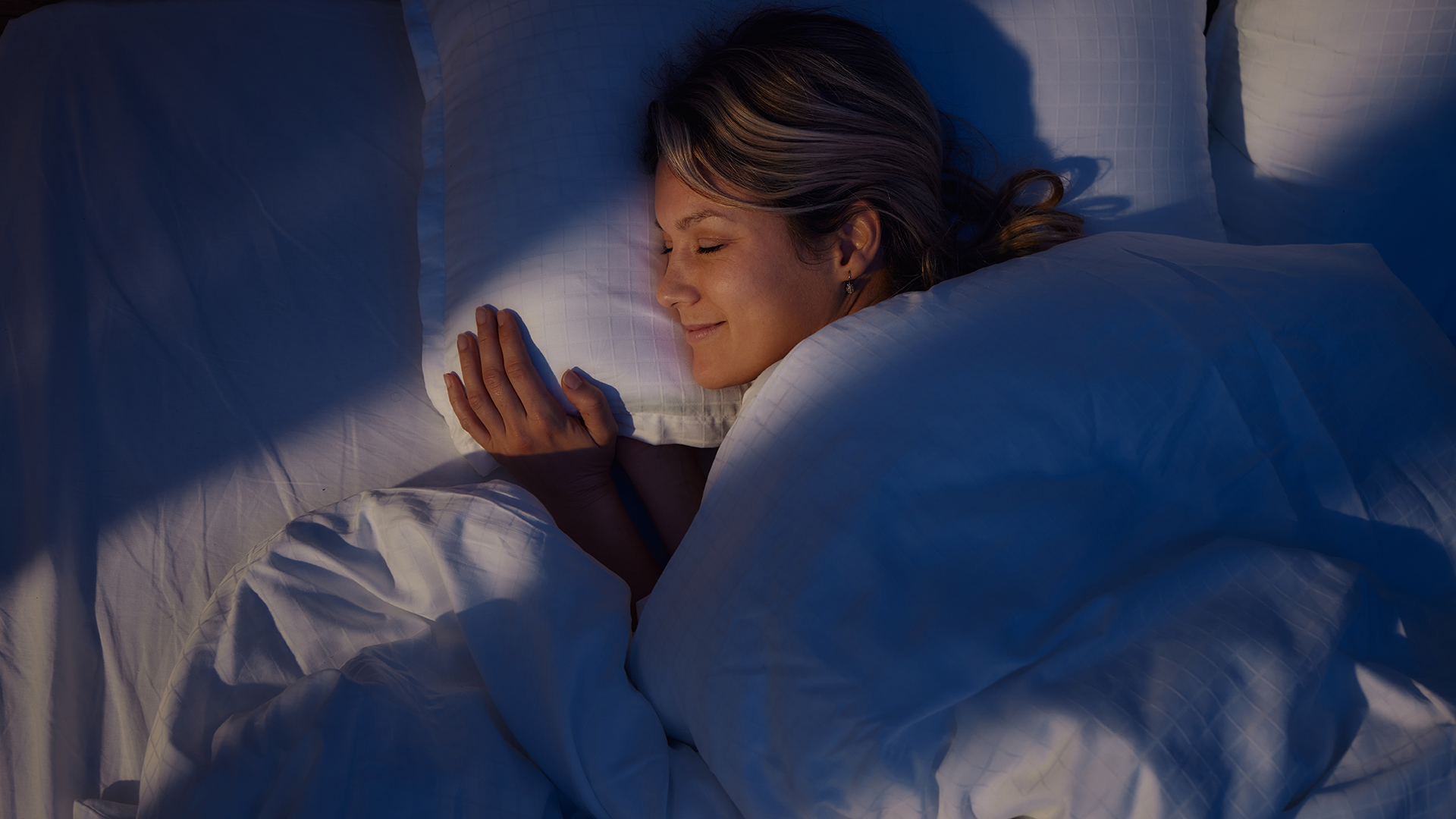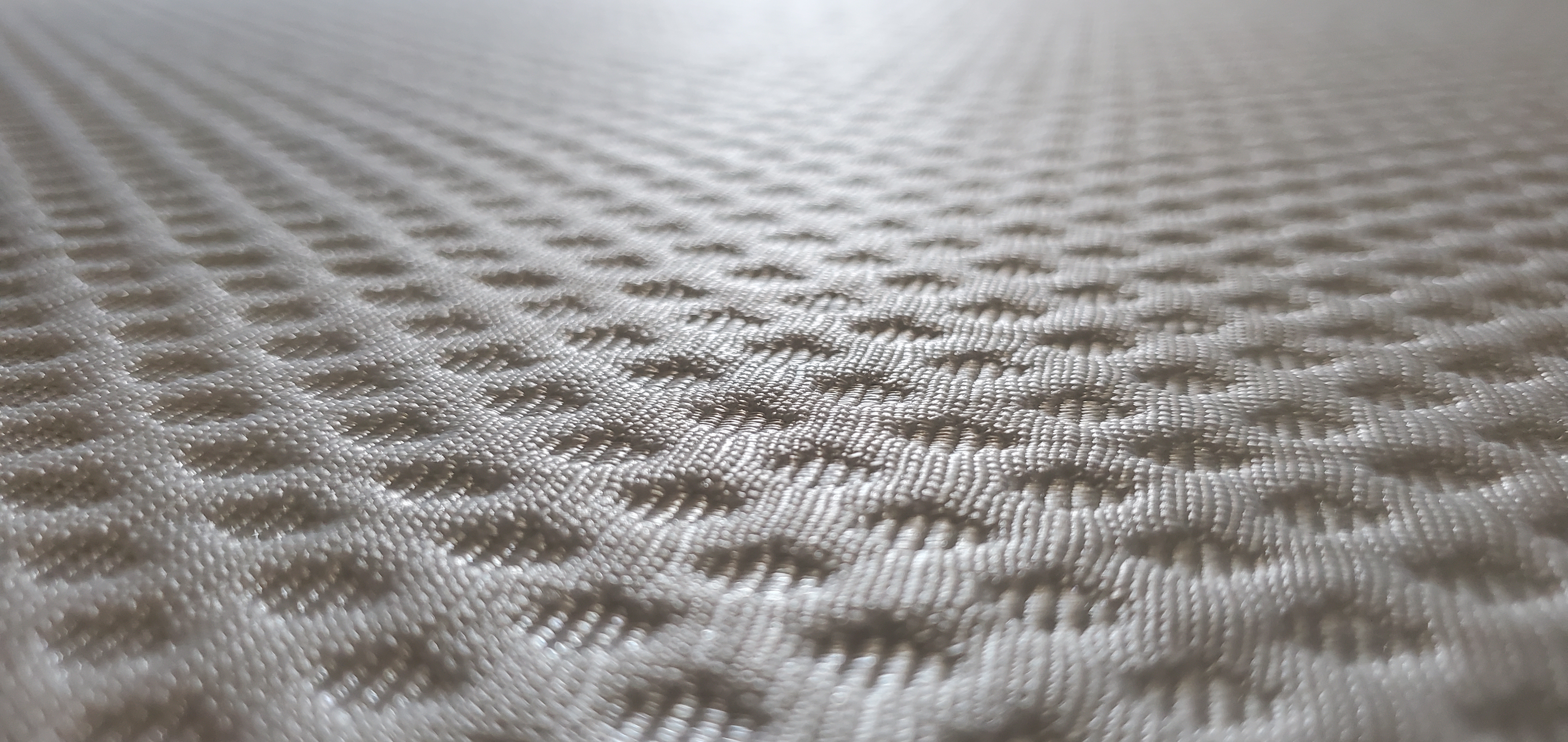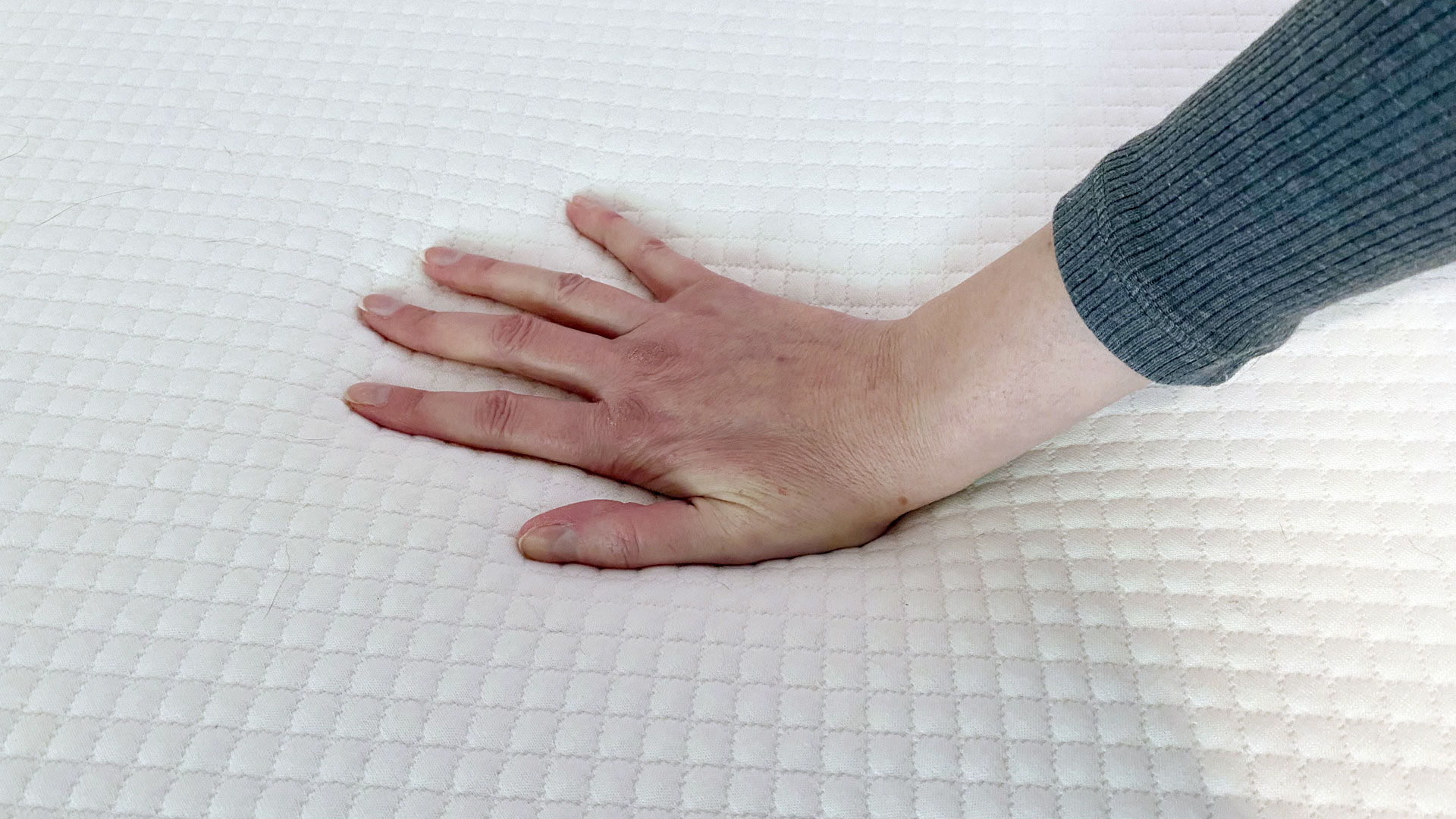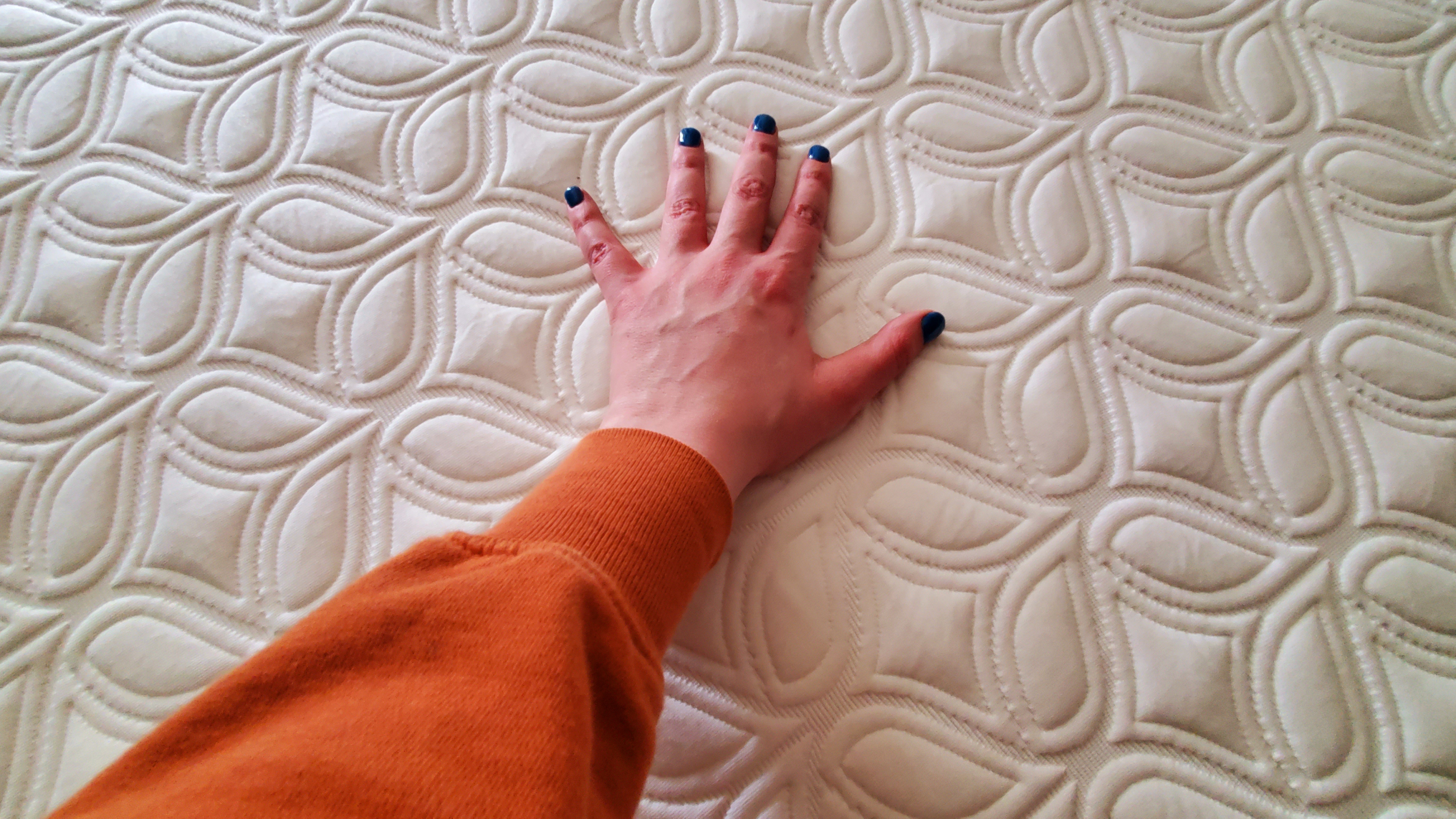
The comfortable cushioning and body-contouring properties of memory foam are why it's one of our favorite mattress materials. Memory foam beds pop up regularly in our best mattress guide and they're often our top choice for side sleepers. However, while sink-in comfort might be one of the greatest strengths of memory foam, it can also lead to its biggest weakness: overheating.
Memory foam mattresses do have a reputation for sleeping hot. This is due to the structure of the material: the dense foam holds on to heat, while the soft cushioning creates lots of skin-to-mattress contact, trapping warm air. However, sleep brands have come up with some innovative ways to tackle the poor temperature regulation, and nowadays many of the best memory foam mattresses actually maintain a comfortable temperature even on warm nights.
If you're interested in a memory foam mattress but worried about overheating, we've put together this guide to help you out. We'll explore why memory foam can sleep hot, how sleep brands are navigating the problem, and what you can do if your sleep setup is leading to sweaty nights.
What is memory foam?
Memory foam is one of the most popular mattress materials on the market and it's made using a substance known as viscoelastic polyurethane. As the exact composition varies from brand to brand there are various types of memory foam, making it a highly diverse material. However, it’s best known for having a softer, sink-in feel with a surface that gently contours to your body and holds onto its shape.
All-foam mattresses are typically made from multiple types of foam, combining top layers of cushioned memory foam (known as the comfort layer) with base layers of high-density foam that provide support and stability. Every layer contributes to the overall breathability of the mattress, but it’s those top comfort layers that we'll be primarily focusing on here.
Does memory foam sleep hot?
Memory foam can sleep hot, although modern memory foam mattresses have clever ways of reducing the problem. However, when first introduced to the market, even premium all-foam mattresses had a tendency to hold onto heat.
Viscoelastic foam – which is the kind of slow-moving memory foam that takes a bit of time to return to its original shape after pressure has been removed – responds to body heat, becoming more elastic as a reaction to the body's warmth. The term 'memory foam' can be applied to many types of foam, depending mostly on how the brand wants to market it.
Even if the foam in your mattress isn't viscoelastic, it might still feel a bit warmer than other mattresses you've slept on. Memory foam has a dense structure. This ensures the material can provide the support a sleeping body needs, but it does come with a downside. The air holes in the material are small, making it much harder for air to pass through. When a person lies on the bed, the foam compresses, further reducing the size of the air holes. Instead of moving through the mattress and dispersing, the hot air becomes trapped.
In contrast, a mattress with springs has plenty of space for air to circulate. Warm air can move through the coils and out the bed, leading to a cooler experience on even the warmest nights. The best hybrid mattresses, which combine springs with a top layer of comfort material, typically sleep cooler than all-foam designs.

As well as the structure of the foam, the feel of the mattress plays a role. Memory foam beds tend to be softer than hybrids, and while this cushioned feel can be comfortable, it’s also a reason for the increased heat retention. When you lie on a soft memory foam mattress, the surface 'hugs' the body, creating a lot of mattress-to-skin contact. This traps heat close to the body, making it harder to thermoregulate, so you're more likely to wake up warm.
However, this reputation for overheating is no longer entirely fair. Nowadays, poor temperature regulation tends to be an issue with cheaper memory foam mattresses, and even then, some budget memory foam beds have decent breathability. Sleep brands have come up with some innovative solutions to the heat retention problem, which we’ll cover below.
Particularly soft memory foam mattresses can still struggle with temperature regulation – even among otherwise high-performing models – due to the deep ‘hug’ effect of the plush foam. In our Tempur-Pedic Tempur-Adapt mattress review, our tester found themselves consistently overheating at night. That's a premium foam mattress, but it definitely has that slow-moving, viscoelastic foam feel.
Similarly, in our Emma Original mattress review, we awarded the bed an overall rating of 4.5/5 stars, but only granted temperature regulation 3.5/5. However, for many brands, it's less of a problem than it used to be.
Why is temperature important for sleep?
Our body temperature naturally rises and falls throughout the day as part of our circadian rhythm. In the evening, our temperature starts to drop to prepare us for sleep. It then rises again in the morning to prepare us for waking up. Because of this, when it's too warm in bed we can both find it harder to drift and be more likely to wake up in the night.

Sleeping hot can also lead to night sweats. While a little bit of sweating overnight is normal, if you regularly wake up with damp bedding and clothing, there might be an issue with your sleep setup. Not only is night sweating uncomfortable, but excess moisture can also lead to dust mites.
How is memory foam getting cooler?
Sleep brands have taken big steps over recent years to improve the temperature regulation of memory foam mattresses. However, while these innovations often sound impressive, their effectiveness can be debatable. If you’re worried about sleeping hot, it’s always best to read reviews rather than relying on sleep brand marketing.
Perhaps the most obvious example of this is ‘open cell foam’. Many mattress brands advertise memory foam beds with ‘open cell foam’, but this is a bit of a misdirect. Open cells do help air circulate, but all mattress foam is open cell. It’s not really a selling point.
Now, let’s talk infusions. Infusions are one of the most popular cooling methods introduced by sleep brands. Gel infused memory foam, for example, contains small beads made of gel that help to absorb heat. Other popular infusion materials include charcoal, graphite, and copper. These materials all have natural cooling properties, intended to draw heat away from the foam and help it dissipate.

However, infusions are a complex subject. It can be tricky to determine just how big a role these materials play in regulating temperature. Generally, sleep brands use only a small amount of the infusion material, to avoid changing the feel of the mattress. And as a result, it's unlikely to have any real impact on the foam's properties.
With that said, many of our favorite cooling foam mattresses do use an infusion material. We were impressed with temperature regulation during our Nectar Premier Copper review, which, unsurprisingly, uses a copper infusion (among other cooling methods). So we’re not completely ruling out the effectiveness of an infusion material. Just don’t assume that because a memory foam mattress is infused with these fibers that it will sleep cooler. In some cases, it probably isn't making much of a difference.
Another impressive-sounding cooling feature is ‘phase change material’. This absorbs and releases heat as the chemical bonds transition through different phases. This is used in foams, but also in mattress covers of some of the best cooling mattresses (read about one in our Cocoon by Sealy Chill mattress review).

Finally, some memory foam mattresses use extra perforations or channels to enhance the airflow. This essentially means holes are pierced into the foam, creating larger spaces for the air to pass through. This is what you'll find in Casper foam mattresses (although in our Casper Original mattress review, we weren't hugely impressed with the temperature regulation).
It can be tricky to navigate sleep brand jargon to work out exactly how effective these cooling measures are. We always recommend reading reviews to learn about real-world experiences with the mattress. For that reason, we include a 'temperature regulation' section in all our mattress reviews.
How to make your memory foam mattress cooler
If your memory foam bed is leading to sweaty mornings, there are ways to improve the cooling without investing in a new mattress. We also have some tips on how to sleep in hot weather, and a guide to our favorite products to help you sleep cool.
1. Choose a better pillow
We’ve spoken a lot about mattresses, but your pillow is also important to maintaining a comfortable temperature, as it can trap heat around your head. Our best pillow guide has some excellent cooling pillows.
2. Use breathable bedding
Your sheets and covers can keep heat trapped in the bed, so look for breathable alternatives. Natural fibers (such as cotton) are typically more breathable than synthetic options, but synthetic bedding infused with cooling materials are also available.
3. Replace your bed frame
Slotted bed frames have better air circulation than solid bases, such as box springs. This is an expensive upgrade, but if you’re consistently sleeping hot, it’s one to consider.
4. Add a cooling topper
A mattress topper is a layer of padding that sits on the surface of your mattress. Cooling toppers can help improve the temperature regulation of a warm bed by adding an additional breathable layer. Check out our best mattress topper guide for some options.
5. Consider your sleep environment
What’s happening outside the bed? Opening a window or adding a fan can increase airflow, so you stay cooler even on a memory foam mattress with poor temperature regulation.
Our favorite cooling memory foam mattresses
Below are some of our favorite memory foam mattresses with enhanced cooling properties, plus the cushioned comfort you'd expect from an all-foam bed.







